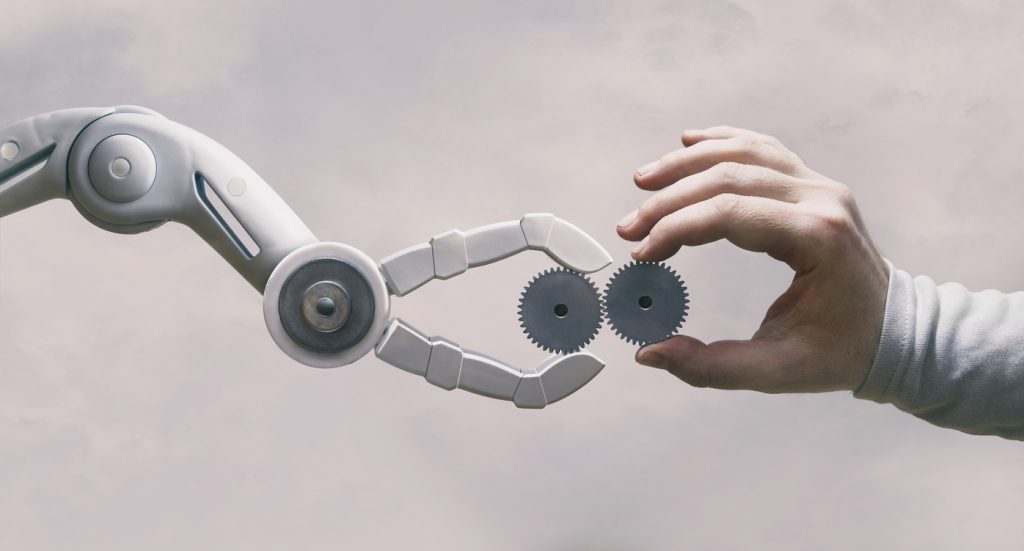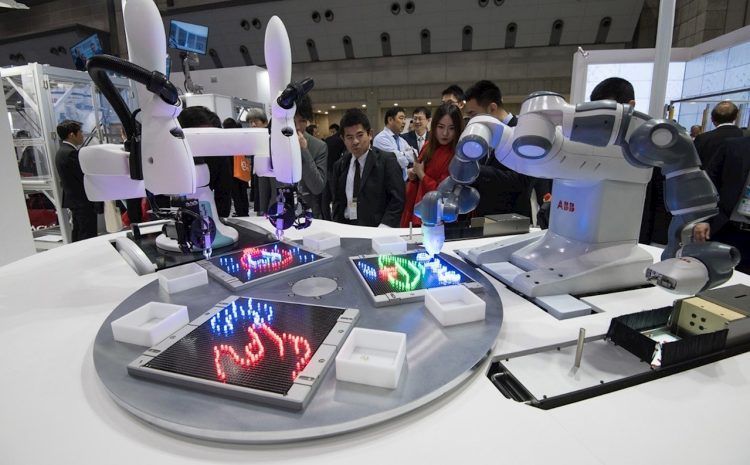In recent years, the rise of collaborative robots (cobots) has marked a transformative shift in the landscape of industrial automation. Traditionally, industrial robots have been reserved for large-scale manufacturing environments, where high capital investments and specialized infrastructure were required. However, with the advent of cobots, a new era of flexible, cost-effective, and scalable automation has emerged—one that is accessible to businesses of all sizes, including small and medium enterprises (SMEs).
This article explores how collaborative robots are revolutionizing the manufacturing industry, enabling SMEs to harness the power of robotic automation without the heavy costs and complexity traditionally associated with industrial robots. We will delve into the specific advantages cobots offer to SMEs, their diverse applications across various industries, and the barriers to adoption that still exist. Additionally, we will examine the future prospects of cobots and their role in shaping the future of workplace automation.
Introduction: The Rise of Collaborative Robots
The industrial sector has witnessed a significant shift in automation over the past few decades. Traditionally, industrial robots have been large, rigid machines designed for high-volume production lines in massive factories. These machines required substantial investment in infrastructure, highly skilled operators, and complex programming. As a result, SMEs were often left behind, unable to access the benefits of automation due to high initial costs and limited resources.
However, with the development of collaborative robots, the landscape of industrial automation has been democratized. Unlike traditional robots, which are typically confined to specific tasks and require safety barriers to protect human workers, cobots are designed to work alongside humans in a safe and intuitive manner. Cobots are not only easier to program and integrate into existing workflows but are also affordable, flexible, and scalable—qualities that make them ideal for SMEs looking to boost their productivity.
1. What Are Collaborative Robots?
Collaborative robots, or cobots, are robots designed to physically interact with humans in a shared workspace. Unlike traditional industrial robots, which are typically separated from humans due to safety concerns, cobots are built with safety features that allow them to work alongside human operators without the need for cages or barriers. This collaborative approach opens up a range of opportunities for businesses of all sizes, as cobots can be easily integrated into existing workflows and operated by employees with minimal technical expertise.
Key Characteristics of Collaborative Robots:
- Safety Features: Cobots are equipped with advanced safety mechanisms such as force sensors, collision detection, and speed limiters to ensure that they can safely work in close proximity to humans.
- Ease of Programming: Unlike traditional robots that require specialized programming skills, cobots often come with intuitive user interfaces and drag-and-drop programming options, making them accessible to operators without a background in robotics or programming.
- Flexibility: Cobots are designed to be highly adaptable, capable of performing a wide range of tasks in different environments. This flexibility allows SMEs to use cobots for various applications without the need for custom-built systems.
- Cost-Effectiveness: Compared to traditional industrial robots, cobots are generally more affordable, with lower upfront costs and reduced maintenance requirements.
2. The Advantages of Collaborative Robots for SMEs
The benefits of collaborative robots extend far beyond their technical specifications. For small and medium-sized enterprises (SMEs), cobots offer several significant advantages, making them an ideal choice for automating processes and boosting efficiency.
a. Lower Barriers to Entry:
Historically, the high cost of industrial robots—along with the need for specialized knowledge to operate and maintain them—has been a significant barrier for SMEs. Cobots, on the other hand, offer a more affordable solution, with some models priced at a fraction of the cost of traditional robots. Additionally, the modular nature of cobots means that businesses can start small and scale up their automation efforts as needed, without the need for massive capital investment.
b. Increased Productivity:
Cobots are designed to automate repetitive or physically demanding tasks, freeing up human workers to focus on higher-value activities. For example, a cobot can take over tasks such as assembly, quality control, material handling, and packaging, which can significantly improve throughput and reduce human error. By optimizing these processes, cobots help businesses achieve higher productivity and better resource allocation.
c. Greater Flexibility:
SMEs often face the challenge of limited production runs and frequent changes in product design. Cobots are well-suited to handle such variability because they can be easily reprogrammed or re-tasked to perform different functions. This flexibility allows businesses to quickly adapt to changes in production needs without the need for extensive downtime or reconfiguration of machinery. For instance, a cobot used in assembly can be repurposed for inspection or packaging with minimal effort.
d. Improved Worker Safety:
Unlike traditional robots that often operate in isolation from humans, cobots are designed to work safely alongside human operators. The collaborative nature of these robots ensures that tasks are shared between robots and humans in a way that minimizes the risk of injury. Cobots are equipped with sensors that detect unexpected contact with humans and will automatically slow down or stop if necessary, preventing accidents and ensuring a safe work environment.
e. Easier Integration:
For SMEs that may not have extensive experience with automation, integrating robots into existing workflows can seem daunting. However, cobots are designed with user-friendly interfaces and easy-to-understand programming systems that make the integration process straightforward. Many cobots also come with pre-built software solutions that allow for quick deployment in production environments. This ease of use reduces the need for specialized technical expertise and helps SMEs get up and running quickly.

3. Applications of Collaborative Robots in SMEs
The versatility of cobots makes them an ideal solution for a wide range of applications across various industries. For SMEs, the ability to automate low to medium-volume tasks that are traditionally labor-intensive is a game changer. Below are some key areas where collaborative robots are making an impact.
a. Manufacturing and Assembly:
Cobots are widely used in manufacturing settings for tasks such as assembly, screwing, welding, and part insertion. These robots can work side by side with human workers to speed up the production process without compromising on precision or quality. Cobots can be easily trained to handle specific tasks on an assembly line, improving both efficiency and accuracy.
b. Material Handling and Logistics:
In warehouses and production facilities, cobots are used for material handling, inventory management, and order picking. With the ability to move heavy materials or parts across the factory floor, cobots help reduce the physical strain on human workers and streamline logistics operations.
c. Quality Control and Inspection:
Cobots can be equipped with vision systems and sensors to perform quality control and inspection tasks. These robots are able to identify defects in products, measure dimensions, and verify that products meet quality standards. In addition to increasing the speed of inspections, cobots can also reduce human error, ensuring that products are consistently manufactured to high standards.
d. Packaging and Palletizing:
Packaging and palletizing are common tasks in industries like food and beverage, pharmaceuticals, and consumer goods. Cobots can assist in picking, packaging, and palletizing products, helping SMEs maintain fast throughput while minimizing the need for manual labor.
e. Healthcare and Medical Devices:
Cobots are increasingly being used in healthcare settings for tasks such as surgical assistance, rehabilitation, and the production of medical devices. For example, in medical device manufacturing, cobots are used for precision tasks such as assembly and testing. They can also assist healthcare workers in patient care by providing direct support during rehabilitation sessions.
4. Overcoming Challenges to Adoption
Despite their many benefits, SMEs may still face challenges when adopting cobots. Below are some of the key barriers and how they can be addressed:
a. Initial Investment Costs:
Although cobots are more affordable than traditional robots, they still require an upfront investment. However, this cost is generally much lower than traditional industrial robots, and the return on investment (ROI) can be realized relatively quickly through increased productivity and reduced labor costs.
b. Integration into Existing Systems:
SMEs may be concerned about the complexity of integrating cobots into their existing workflows. However, as mentioned earlier, most cobots come with easy-to-use programming interfaces and are designed for seamless integration. Additionally, many cobot manufacturers offer consulting services to help SMEs implement automation solutions.
c. Training and Support:
While cobots are designed to be user-friendly, employees may still require training to operate them effectively. Many cobot manufacturers offer training programs, user manuals, and online resources to ensure that employees can quickly learn how to use the robots. Additionally, technical support is available to help businesses address any issues that may arise during the integration process.
5. The Future of Collaborative Robots in SMEs
The future of collaborative robots in SMEs looks promising. As technology continues to advance, we can expect further improvements in cobot capabilities, including:
- Better AI and machine learning algorithms that will allow cobots to become even more adaptable and intelligent.
- Smarter sensor technology to enhance the precision and safety of cobots.
- Lower costs and faster deployment times, making cobots even more accessible to a wider range of businesses.
Moreover, as SMEs continue to adopt automation, cobots will play a key role in helping businesses stay competitive in a global market. With their ability to increase productivity, reduce costs, and enhance worker safety, cobots are poised to become an indispensable tool for SMEs in the years to come.
Conclusion
Collaborative robots have ushered in a new era of industrial automation, breaking down barriers and enabling SMEs to take full advantage of robotic technology. By offering a flexible, cost-effective, and safe solution for automation, cobots allow SMEs to boost productivity, improve quality, and enhance worker safety. As technology continues to advance, the potential for cobots in small and medium-sized enterprises will only continue to grow, offering exciting opportunities for businesses to innovate, adapt, and thrive in the future.











































